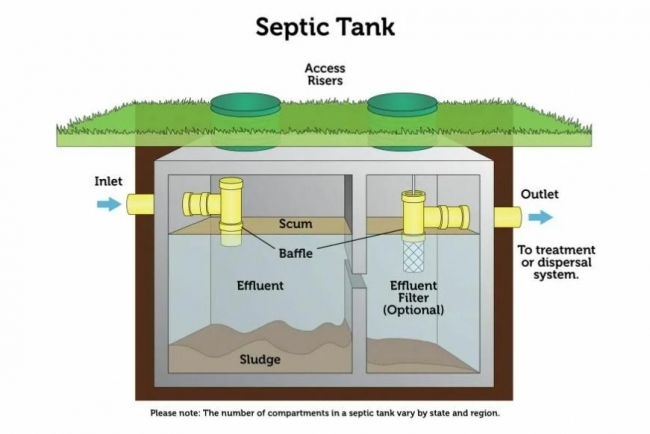Septic systems are a kind of wastewater treatment structures situated underground. These structures are commonly used in rural areas and these systems do not have any centralized sewer system. These systems use a combination of proven and natural technology or the treatment of wastewater which is produced by kitchen drains, bathrooms, and laundry from household plumbing systems. Septic tanks maintainance is very important and for the one can go for denver drain cleaning service to have the denver sewer line replacement and denver sewer camera for the maintainane of septic tanks.

A septic tank and a solid absorption fields or drain field are the two main parts of the septic tanks.
The septic tank digests the organic matter from the wastewater and separates the solids and floatable matter from the wastewater. A Solid-base system throws out the liquid known as effluent from the septic tank into a network on perforated pipes laid in a leach field, chamber, or other special structure which are designed to slowly release the liquid in the soil.
Other system requires the help of gravity or pumps to help septic tanks effluent to meet through sand, constructed wetlands, organic matter or other media to neutralize or remove the harmful component present in wastewater such as disease-causing pathogens, phosphorous, nitrogen, and other contaminants Some alternative system sare designed in order to evaporate the wastewater or disinfectant before it is released into the soil.
Working of a septic system:
- All water from your home gets collected to a septic tank via the main drainage pipe.
- The septic tank is situated underground. A septic tank is a type of water-tight container that collects water and usually, it is made up of fiberglass, concrete, or polyethylene. The main job of a septic tank is to collect and hold the wastewater long enough sp that the solid matters present in wastewater gets enough time to get settled down to the bottom which eventually forms a sludge, while the grease and oil start floating on the top in the form of scum. To prevent the scum and sludge from leaving the tank, an especially designed compartment and a T-shaped outlet are used.
- The effluent (liquid wastewater) then gets discharged into the drain field.
- As the wastewater drip or travels through the soils, the soil starts treating and dispersing the wastewater and it ultimately gets discharges into the groundwater.
- And finally, the wastewater drips from the soil, the soil naturally removes the viruses, coliform bacteria, and nutrients present in it. Coliform bacterias is a group of bacteria that gets inhabitant inside the human intestines or other warm-blooded animals. This indicates human fecal contamination.